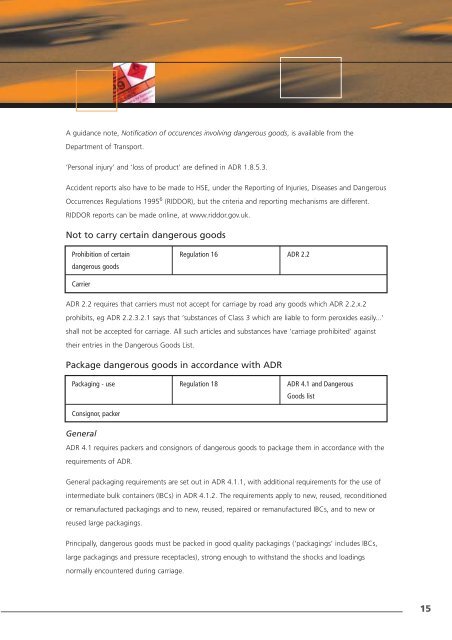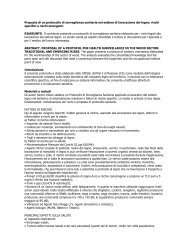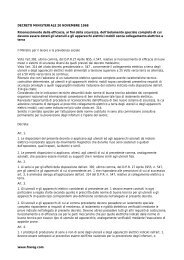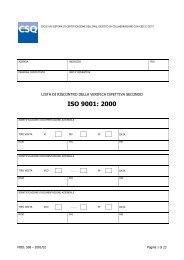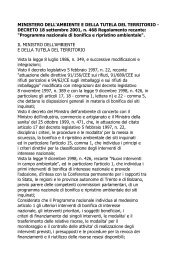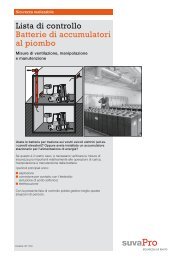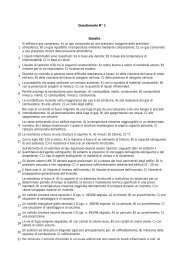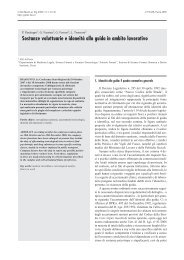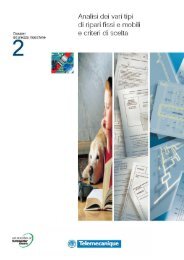Working with ADR - An introduction to the carriage of ... - everysite
Working with ADR - An introduction to the carriage of ... - everysite
Working with ADR - An introduction to the carriage of ... - everysite
Create successful ePaper yourself
Turn your PDF publications into a flip-book with our unique Google optimized e-Paper software.
A guidance note, Notification <strong>of</strong> occurences involving dangerous goods, is available from <strong>the</strong><br />
Department <strong>of</strong> Transport.<br />
‘Personal injury’ and ‘loss <strong>of</strong> product’ are defined in <strong>ADR</strong> 1.8.5.3.<br />
Accident reports also have <strong>to</strong> be made <strong>to</strong> HSE, under <strong>the</strong> Reporting <strong>of</strong> Injuries, Diseases and Dangerous<br />
Occurrences Regulations 1995 6 (RIDDOR), but <strong>the</strong> criteria and reporting mechanisms are different.<br />
RIDDOR reports can be made online, at www.riddor.gov.uk.<br />
Not <strong>to</strong> carry certain dangerous goods<br />
Prohibition <strong>of</strong> certain Regulation 16 <strong>ADR</strong> 2.2<br />
dangerous goods<br />
Carrier<br />
<strong>ADR</strong> 2.2 requires that carriers must not accept for <strong>carriage</strong> by road any goods which <strong>ADR</strong> 2.2.x.2<br />
prohibits, eg <strong>ADR</strong> 2.2.3.2.1 says that ‘substances <strong>of</strong> Class 3 which are liable <strong>to</strong> form peroxides easily...’<br />
shall not be accepted for <strong>carriage</strong>. All such articles and substances have ‘<strong>carriage</strong> prohibited’ against<br />
<strong>the</strong>ir entries in <strong>the</strong> Dangerous Goods List.<br />
Package dangerous goods in accordance <strong>with</strong> <strong>ADR</strong><br />
Packaging - use Regulation 18 <strong>ADR</strong> 4.1 and Dangerous<br />
Goods list<br />
Consignor, packer<br />
General<br />
<strong>ADR</strong> 4.1 requires packers and consignors <strong>of</strong> dangerous goods <strong>to</strong> package <strong>the</strong>m in accordance <strong>with</strong> <strong>the</strong><br />
requirements <strong>of</strong> <strong>ADR</strong>.<br />
General packaging requirements are set out in <strong>ADR</strong> 4.1.1, <strong>with</strong> additional requirements for <strong>the</strong> use <strong>of</strong><br />
intermediate bulk containers (IBCs) in <strong>ADR</strong> 4.1.2. The requirements apply <strong>to</strong> new, reused, reconditioned<br />
or remanufactured packagings and <strong>to</strong> new, reused, repaired or remanufactured IBCs, and <strong>to</strong> new or<br />
reused large packagings.<br />
Principally, dangerous goods must be packed in good quality packagings (‘packagings’ includes IBCs,<br />
large packagings and pressure receptacles), strong enough <strong>to</strong> <strong>with</strong>stand <strong>the</strong> shocks and loadings<br />
normally encountered during <strong>carriage</strong>.<br />
15


